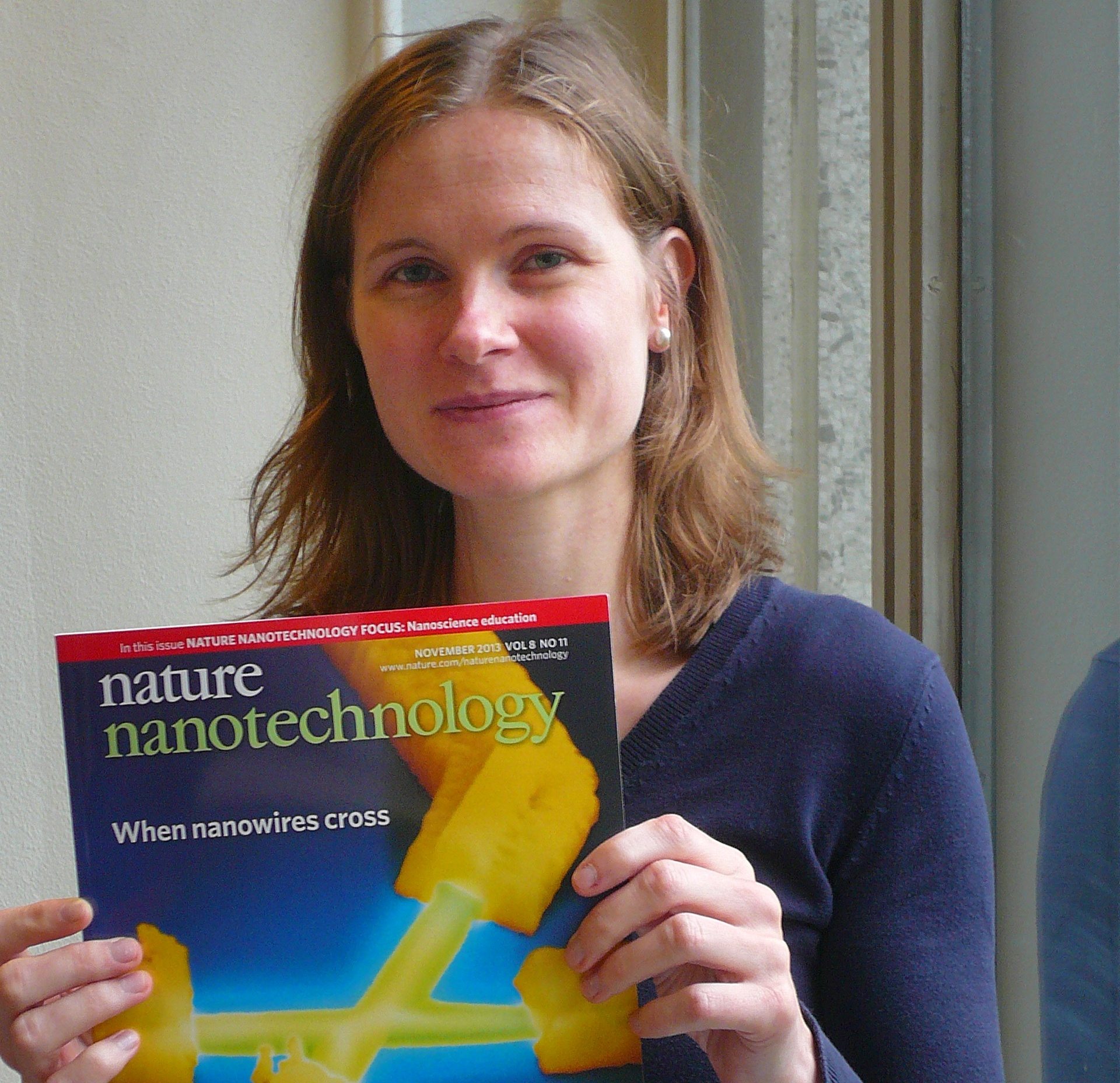Micron-sized semiconductor crosses set the stage for Majorana manipulations, which may be used as basics for quantum computing.
In about five years’ time, researchers at the Kavli Institute’s quantum computing lab (faculty of Applied Sciences) hope to be able to demonstrate some quantum mechanical juggling with Majorana’s – the elusive particle equal to its own counter particle that was first observed by Prof. Leo Kouwenhoven and his team in 2012 (after its prediction in 1937 by the Italian physicist Ettore Majorana).
Moving Majorana’s around is a way to change their quantum state, explains Dr Ilse van Weperen who did her PhD research on crossing nanowires, the type of which will one day host Majorana’s to be moved around, or ‘braided’ as researchers prefer to call the process.
Imagine you have two identical particles and you switch their positions, then either their quantum state remains unchanged (in the case of bosons) or changes polarity (fermions). So if you exchange them
one more time, everything is back to as it was.
Not so with moving Majorana’s however. Their quantum state depends on the order in which the exchanges have been performed. Otherwise stated: manipulating them is a way to set the quantum state of Majorana’s. That
property makes them suitable for quantum computing. Even more so because Majorana’s are stable and insensitive to local disturbances. Instability is
the major challenge for other types of quantum bits such as enclosed electrons or vacancies in diamond lattices: their fragile quantum state will be jammed typically within milliseconds after setting it.
“Moving Majorana’s is important for two reasons”, says Van Weperen. “If they display the properties that theory predicts, we will have proven beyond doubt the identity of the particles we measure as being Majorana’s. On top of that, we will be able to control them which is a prerequisite for using them as qubits in a quantum computer.”
That target is still some way off and Van Weperen’s research is only part of the puzzle. She has shown that the nanocrosses are fit to host the Majorana’s. Other researchers work on the superconductor, the contacts between superconductor and semiconductor nanowires and emergence of a Majorana pair.
A cross or T-formed nanowires are needed for Majorana manipulations. Simply said, crossing nanowires offer the possibility of moving one Majorana aside, put the other into its place and moving the first out of the side wire into the position of the second one. Moving Majorana’s around is a bit like solving these square puzzles with one tile missing.
Prof. Erik Bakkers’ group at the TU Eindhoven grows the semiconductor nanowires from vapours. Bakkers’ group also provided the Indium Antimonide (InSb) nanowires in which a Majorana was first detected. He now had to surpass himself by not only growing needles, but also crosses.
They did that by heating the needles and melting them a bit, which caused the gold catalyst particle on top of the needle to droop sidewards. When he resumed the growing process by feeding the right vapours, crystallisation under the gold droplet would resume and the wire would continue to grow more or less perpendicular to its beginning. In a whole wood of crooked nanowires, some would fuse into nanocrosses.
Van Weperen has established that electrons easily flow from one nanocross wire to the other one, comparable to the electron flow in a single wire. She therefore and concludes that the nanocrosses should be able to host moving Majorana’s.
The article she published together with dr. Sebastién Plissard (TU Eindhoven) and co-authors on that finding made the cover of Nature Nanotechnology last year. Last month she defended her PhD thesis.
–> Ilse van Weperen, Quantum transport in indium antimonide nanowires, PhD supervisors Prof. Leo Kouwenhoven (Kavli institute for nanoscience, AS) and Prof. Erik Bakkers (TU Delft and TU/e), 6 October 2014



Comments are closed.